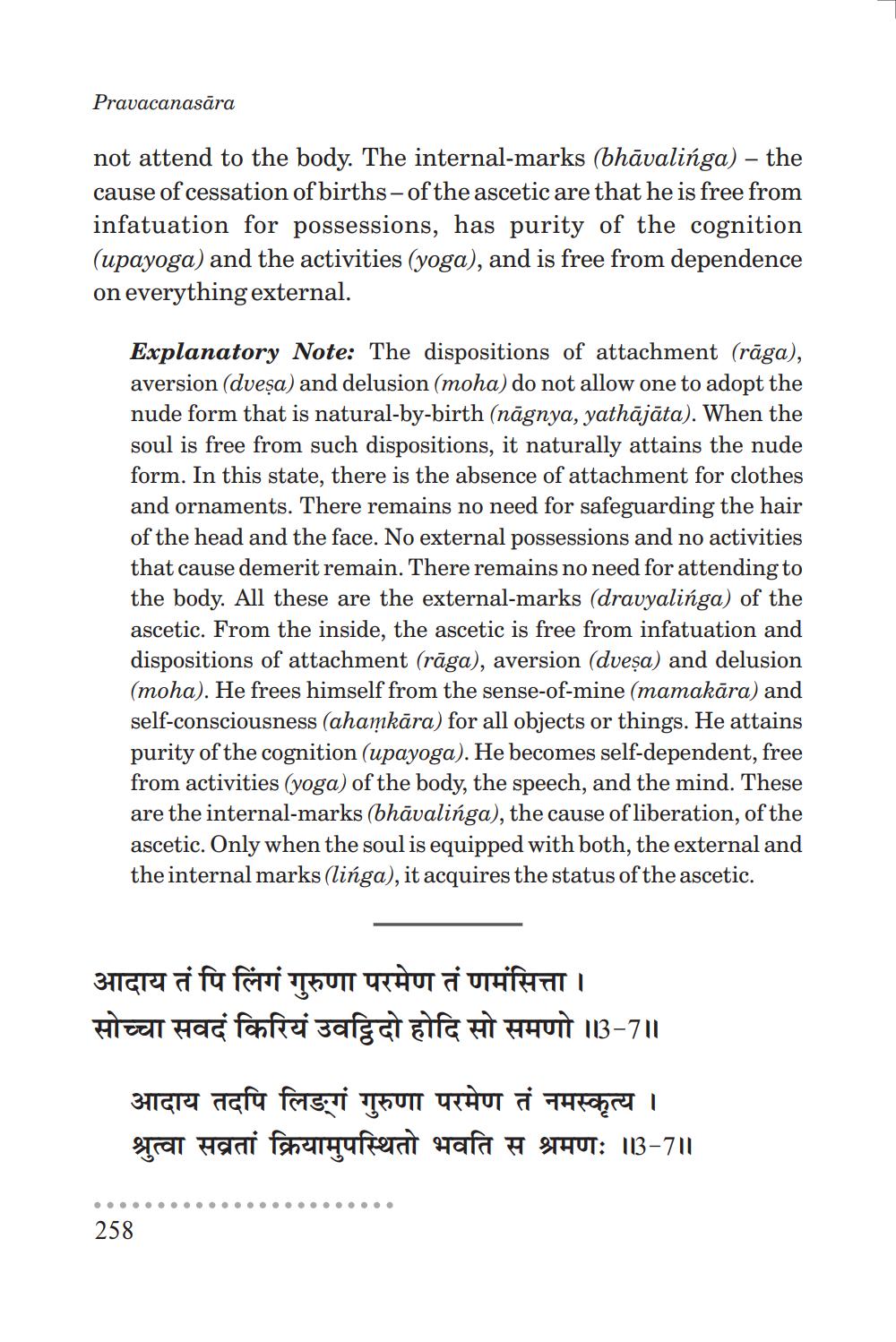________________
Pravacanasāra
not attend to the body. The internal-marks (bhāvalińga) – the cause of cessation of births - of the ascetic are that he is free from infatuation for possessions, has purity of the cognition (upayoga) and the activities (yoga), and is free from dependence on everything external.
Explanatory Note: The dispositions of attachment (rāga), aversion (dveşa) and delusion (moha) do not allow one to adopt the nude form that is natural-by-birth (nāgnya, yathājāta). When the soul is free from such dispositions, it naturally attains the nude form. In this state, there is the absence of attachment for clothes and ornaments. There remains no need for safeguarding the hair of the head and the face. No external possessions and no activities that cause demerit remain. There remains no need for attending to the body. All these are the external-marks (dravyalińga) of the ascetic. From the inside, the ascetic is free from infatuation and dispositions of attachment (rāga), aversion (dveşa) and delusion (moha). He frees himself from the sense-of-mine (mamakāra) self-consciousness (ahamkāra) for all objects or things. He attains purity of the cognition (upayoga). He becomes self-dependent, free from activities (yoga) of the body, the speech, and the mind. These are the internal-marks (bhāvalinga), the cause of liberation, of the ascetic. Only when the soul is equipped with both, the external and the internal marks (lińga), it acquires the status of the ascetic.
आदाय तं पि लिंगं गुरुणा परमेण तं णमंसित्ता। Heelt Hac fenfrei afect alfa HT HLUTT 113–711
आदाय तदपि लिङ्गं गुरुणा परमेण तं नमस्कृत्य । Stral Hoai fcheltuien hafa THUT: 113–711
........................
258




